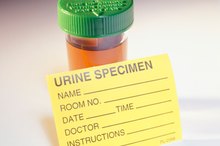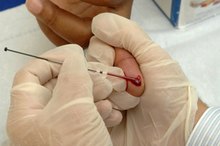How to Read ANA Blood Test Results
How to Read ANA Blood Test Results. An antinuclear antibody (ANA) test is a blood test used to diagnose autoimmune disorders such as systemic lupus erythematosus (SLE). It may be ordered in conjunction with other autoantibody tests such as ESR (erythrocyte sedimentation rate) or CRP (C-reactive protein) for more specific diagnostic studies. Symptoms that precipitate the need for an ANA blood test include joint pain, fatigue and low-grade fever.
Evaluate ANA Blood Test Results
Determine the test result by the use of either indirect immuno-fluorescence microscopy or ELISA (enzyme-linked immunoabsorbant assay). The presence or lack of fluorescence indicates the results at different titers (the point at which the blood sample can be diluted before antibodies can no longer be observed).
Abnormal Urine Analysis
Learn More
Identify specific fluorescent patterns in cells when the slide is observed under a microscope. A diffuse or homogeneous pattern, speckled pattern and peripheral pattern are associated with SLE. Homogeneous and speckled patterns are also associated with mixed connective tissue disease.
Report the titer associated with the change from positive to negative serial dilution. If a titer of 1 to 10 shows positive fluorescence, keep diluting until the fluorescence disappears. The reported titer will be the last titer read before the negative result.
How to Improve Globulin Count
Learn More
Report the ANA blood test as positive or negative when you read the results. If the result is positive, include the titer and the pattern of fluorescence in the report.
Plan to test specific auto-antibodies if the results read positive for ANA. Two tests, anti-dsDNA and anti-SM, can be used to support the diagnosis of lupus (SLE).
- Determine the test result by the use of either indirect immuno-fluorescence microscopy or ELISA (enzyme-linked immunoabsorbant assay).
- Two tests, anti-dsDNA and anti-SM, can be used to support the diagnosis of lupus (SLE).
Follow up for ANA Testing
Expect a complete medical history and examination along with the ANA test results to confirm and identify the specific type of autoimmune disease. In some individuals, a high ANA titer is normal.
Consider other diseases associated with a high ANA titer such as rheumatoid arthritis, scleroderma, juvenile rheumatoid arthritis and Raynaud's syndrome.
Realize other diseases such as Addison's disease, hepatitis, Hashimoto's thyroiditis and some diseases of the blood cells can result in a high ANA reading.
Tips
While people with SLE usually have a positive ANA result, a positive ANA result does not specifically give a diagnosis of lupus (SLE). Other disease processes may be indicated by the results. Further testing is required.
Warnings
ANA results can be affected by age and some medications. Be sure to tell your doctor about all medications you take, both prescribed and over the counter.
- Expect a complete medical history and examination along with the ANA test results to confirm and identify the specific type of autoimmune disease.
- Consider other diseases associated with a high ANA titer such as rheumatoid arthritis, scleroderma, juvenile rheumatoid arthritis and Raynaud's syndrome.
Related Articles
References
- Nosal RS, Varacallo M. Biochemistry, antinuclear antibodies (ANA) [Updated 2018 Dec 20]. In: StatPearls [Internet]. Treasure Island (FL): StatPearls Publishing; 2019 Jan.
- American Association for Clinical Chemistry. Antinuclear antibody (ANA). Updated November 19, 2019.
- American College of Rheumatology. Antinuclear antibodies (ANA). Updated March, 2019.
- Davidsohn I, Sanford AH, Todd JC. Clinical Diagnosis by Laboratory Methods. Sagwan Press; 2015.
Tips
- While people with SLE usually have a positive ANA result, a positive ANA result does not specifically give a diagnosis of lupus (SLE). Other disease processes may be indicated by the results. Further testing is required.
Warnings
- ANA results can be affected by age and some medications. Be sure to tell your doctor about all medications you take, both prescribed and over the counter.
Writer Bio
This article was written by the CareerTrend team, copy edited and fact checked through a multi-point auditing system, in efforts to ensure our readers only receive the best information. To submit your questions or ideas, or to simply learn more about CareerTrend, contact us [here](http://careertrend.com/about-us).









